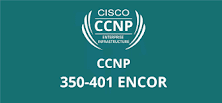Infraestructure technologies
This Infrastructure section of the blueprint is 30% of the Cisco exam. Whether you’re familiar with these topics or seeing them for the first time, these are the core networking topics for the CCNP Enterprise certification. Let’s review!
3.1 Layer 2
- 3.1.a Troubleshoot static and dynamic 802.1q trunking protocols
- 3.1.b Troubleshoot static and dynamic EtherChannels
- 3.1.c Configure and verify common Spanning Tree Protocols (RSTP and MST)
3.2 Layer 3
- 3.2.a Compare routing concepts of EIGRP and OSPF (advanced distance vector vs. linked state, load balancing, path selection, path operations, metrics)
- 3.2.b Configure and verify simple OSPF environments, including multiple normal areas, summarization, and filtering (neighbor adjacency, point-to-point and broadcast network types, and passive interface)
- 3.2.c Configure and verify eBGP between directly connected neighbors (best path selection algorithm and neighbor relationships)
3.3 Wireless
- 3.3.a Describe Layer 1 concepts, such as RF power, RSSI, SNR, interference noise, band and channels, and wireless client devices capabilities
- 3.3.b Describe AP modes and antenna types
- 3.3.c Describe access point discovery and join process (discovery algorithms, WLC selection process)
- 3.3.d Describe the main principles and use cases for Layer 2 and Layer 3 roaming
- 3.3.e Troubleshoot WLAN configuration and wireless client connectivity issues
3.4 IP Services
- 3.4.a Describe Network Time Protocol (NTP)
- 3.4.b Configure and verify NAT/PAT
- 3.4.c Configure first hop redundancy protocols, such as HSRP and VRRP
- 3.4.d Describe multicast protocols, such as PIM and IGMP v2/v3
Layer 2
Trunking, EtherChannels, and Spanning Tree. . Know how trucks form, know how to bundle links and the protocols available there, and know your Spanning Tree, including Multiple Spanning Tree.
Layer 3
You’ll be going deeper with OSPF with multiple areas. Know the differences between OSPF and EIGRP. What’s required to form neighbor relationships? Which one uses DUAL? Know the port numbers they utilize. Even though you won’t be asked to configure OSPF or EIGRP during the exam, spending a healthy amount of time in the lab configuring both of these protocols will serve you well.
You should be familiar with the BGP concepts tackled here. I would say that comparing the depth at which the Route exam covers BGP vs the ENCOR exam, it’s not as in depth. But there’s still plenty of meat on that bone.
Wireless
Wireless. . At any job I’ve had where networking was even a part of my responsibilities, I always had the opportunity to touch a wireless controller. I find the addition of wireless to the CCNP ENCOR exam refreshing and necessary. You cover just enough wireless here to be useful in an enterprise networking environment.
For wireless you should know basic RF (Radio-frequency) principles, different antenna types and their associated radiation patterns, what frequencies wireless operates in and what can cause harmful interference to them. Make sure you understand the various forms of wireless authentication, as well as the AP/WLC join process, and troubleshooting common client connectivity issues.
IP Services
The last part of the infrastructure section is IP Service, and should be familiar to most. Here you’ll cover NTP, NAT/PAT, FHRPs, and Multicast. Multicast is definitely new for anyone tackling the CCNP ENCOR exam. To thoroughly cover the topic, you’ll need to understand IGMP (Internet Group Management Protocol) and PIM (Protocol Independent Multicast) and its various modes. HSRP and VRRP.Being able to describe those in some depth will serve you well going into your ENCOR exam.
 Reviewed by ohhhvictor
on
August 26, 2022
Rating:
Reviewed by ohhhvictor
on
August 26, 2022
Rating:
















No comments: